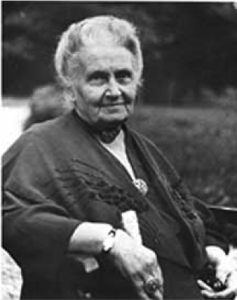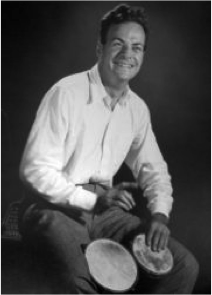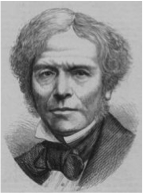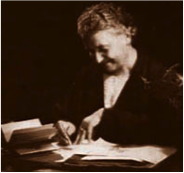By Marsha Familaro Enright
President, The Reason, Individualism, Freedom Institute,
sponsor of The Great Connections Program
The Economic Stage is Set
In recent decades, the creative destruction of capitalism has changed the face of the U.S. economy, destroying many former giants of industry like TWA and Montgomery Wards, integrating others into colossal conglomerates, like GE. Simultaneously, thousands of new, small businesses grew from the work and talent of retired, outplaced workers. These developments were made possible by the adaptability and creativity of Americans.
Thomas Friedman’s 2005 runaway bestseller about globalization, The World Is Flat, argues that our remarkably cheap, worldwide communications technology is changing the nature of work even further. Internet email, Web sites, satellite links, and the rapidly expanded use of computer technology to automate many functions are unleashing change as fundamental as that of the Gutenberg press.
At root, these changes are empowering individuals around the globe. Most apparent is the ability of millions of people with good technical skills in faraway lands to offer excellent work for half or less of U.S. labor prices. “Global Outsourcing for the Little Guy,” in the Chicago Tribune (5/29/2006) reports on this phenomena. Web site designs that cost thousands of dollars in the U.S. can be created for $750 in India. India’s system of IITs (Indian Institutes of Technology) and the powerful ambition of its long-impoverished people make their huge population an awesome pool of talent.
Elance.com, a job-bidding Web site also mentioned in the article, empowers individuals and small businesses in the U.S., too. This website especially helps those with the creativity, adaptability, and great collaborative skills that have kept U.S. business in the forefront of innovation—and rich. These key ingredients enable individuals to offer unique skills and products to the market, thereby maintaining a market edge.
“The Gartner Group, the technology consultants, coined a term to describe the trend in the information technology world away from specialization and toward employees who are more adaptable and versatile. The group calls the employees ”Versatilists.” Building employee versatility and finding employees who are already or are willing to become Versatilists “will be the watchword for career planning. “…Versatilists are capable not only of constantly adapting but also of constantly learning and growing,” says Friedman. These are people who have the ability to master technical knowledge and can easily adapt and move from one area of expertise to another.
The highly adaptable Versatilist can effectively move from a job requiring one skill set to another, like Marcia Loughry, whom Friedman interviewed. As her former functions became outsourced or obsolete, she moved from an Electronic Data Systems (EDS) word-processing job in 1978 to four other jobs, taught herself Novell Netware and acquired other skills and knowledge. Eventually she rose to one of the highest positions at EDS—enterprise architect—all through curiosity, learning, excellent reasoning skills, and a willingness to adapt.
“The deep technical skills around math and science are going to get you in the door, but they are not what are going to keep you there or make you wildly successful. What will keep you there is developing a broader view,” said Loughry.
What fosters a broad view? The ability to continually learn. How can we use education to nurture young people so they will be well prepared for a life of versatility? At root, human developmental needs and psychological tendencies must be respected. Teaching methods honed to fit learning and development can make all the difference.
The Montessori Approach

This is not a new puzzle to those familiar with the Montessori Method. Maria Montessori used almost 50 years of observation and experimentation deeply informed by science to hone her ideas and methods on education. These methods stoke individual curiosity and ingenuity while ensuring that students master basic skills and effectively ingest huge amounts of information.
Although, in the U.S., Montessori schools are known mainly as preschools, many Montessori schools go through 8th grade and some even through high school. In the past 20 years, these schools have grown rapidly throughout the country, due to their superior system for producing knowledgeable, happy, highly motivated, and capable students.
University of Virginia psychology professor Angeline Stoll Lillard’s 2005 book, Montessori: The Science Behind the Genius, succinctly explains Montessori’s principles and the research evidence supporting them. The Great Connections’ approach grows out of the application of Montessori principles to the adult level of education.
“When you have solved the problem of controlling the attention of the child, you have solved the entire problem of education.” Maria Montessori
When it comes to attention and learning, Montessori could have been talking about anyone, not just the child. Without attention, there is no learning. Attentional resources (focus) are limited. They must be used well to efficiently learn the most possible.
Further, the developed ability to concentrate on work and goals and to self-maintain interest and focus allow a person to succeed in long-term projects and purposes. In Montessori, Dewey, and Capitalism, Jerry Kirkpatrick calls this “Concentrated Attention.”

In his studies on intensely productive and creative people, University of Chicago research psychologist Mihalyi Csikszentmihalyi found that certain conditions elevate the ability to pay attention, and pay attention deeply for long periods of time. He also recognized that specially designed practices in Montessori classrooms provide these conditions throughout the school day. His research group, including the work of Kevin Rathunde, has found many exceptional outcomes from these Montessori practices.
The use of the Three-Period Lesson is a case in point.

Much scientific research shows that humans learn best if:
1. They are highly motivated to learn the material for some personal end.
2. They are physically engaged.
3. They understand the application of the material to their lives.
The classic Montessori Three-Period Lesson ingeniously engages human attention. With small groups of students, teachers (or “Guides” as we prefer to call them in Montessori) demonstrate learning materials specially designed to focus attention on an important concept, such as rates of change in calculus. Pictures, objects, sounds, and machines make the idea vivid. These Montessori materials engage the student’s whole intellect, sensory, motor, and conceptual, thereby powerfully imprinting memory.
The Guide gathers one to four students ready for the particular lesson, seats them in front of the materials, and then demonstrates their use with as few words as possible. For example, the Guide might use fraction circles to demonstrate the addition of fractions. (see picture below)

These are sets of metal, pie-shaped circles cut into different quantities of wedges with little knobs on each wedge. For example, one circle consists of 4 wedges, another of 12, to demonstrate fourths and twelfths. There are numerous kinds of problems possible with these circles, including all the operations of arithmetic. In the most basic, the child can literally see the relationship of different proportions to each other by taking the wedges out of the circles and putting them back in—in different combinations. Each lesson demonstrates one possible use of the materials.
During the lesson, the Guide speaks little, allowing the student to focus and observe the demonstrated examples carefully. The Guide encourages questions from the student; she also, models curiosity, and triggers discussion with questions of her own when students are not forthcoming. Truly successful teachers are exceptional at listening to students’ questions, surmising what students need to know, and modeling and encouraging thinking.
After the fraction demonstration, the Guide asks the student to explain what to do with the materials to solve the next example and moves the materials according to the student’s instructions. Finally, the Guide asks the student to demonstrate the material, turning student into teacher and thereby requiring a more complete level of understanding for the student’s performance.
After the lesson, the student is free to pursue more problems right then or use these materials later to practice until the material is mastered, at a time when the student feels interested in working on the material (on the principle that one learns best when one is intrinsically motivated). The Guide regularly takes notes while observing the children in her class and if she finds a child avoiding some material, she makes it her job to think of a way to interest the child in the work.
A key to the Montessori Method’s success is ensuring that the amount of material conveyed at one lesson is not overwhelming. More frequent, shorter lessons with follow-up exercises are preferable to one long demonstration. Of course, preparing shorter, pointed lessons is far more taxing to the teacher, but the Montessori Method has systems to make this aspect of teaching less time consuming.
The Three-Period Lesson can be fruitfully adapted to many college-level subjects. In fact, some college classes, such as chemistry, often use a version of the Three-Period Lesson, with the experiment as the final student demonstration. However, as with most excellent methods, the devil is in the details, which is why The Great Connections’ guides are trained in Montessori principles.
Lectures in Their Proper Place
If organized well, lectures can distill a vast amount of information down to a few principles and key examples. A lecture can be an economical introduction to a subject. The best lectures essentialize the subject matter conveyed by the lecture.
However, as a method, lectures are designed to be easy for the teacher, not the student. They allow the teacher to recount his or her knowledge without feedback or interrupting questions and side issues from the listener. Although sometimes necessary, lectures are usually a difficult way to learn because they frequently run counter to human learning tendencies.
For several reasons, students must exert an enormous amount of effort to stay focused on what the speaker says during lectures. A lecture requires the learner to mostly listen and look a little. Unlike learning methods that make learning easy, the lecture usually does not engage the whole mind, including vivid perceptions and imagination, or the body of the student. Listening and looking during a lecture involves little sensory-motor work, which normally helps cement learning in memory.
One of the reasons visual aids such as Microsoft® Office PowerPoint® are preferred for lectures is because they offer sensory stimulation, providing at least some perceptual imagery to associate with the ideas being conveyed. Although, like books, lectures can have illustrations, the student cannot study the illustrations in a lecture as long as he or she wants.
Human interaction usually helps to increase interest as well as physically engage the student, but during a lecture, there is very little interaction between student and teacher. Often the lecture is aimed at a large or general audience and thus cannot address individual student goals, interests and comprehension difficulties.
A student cannot stop the lecture to ask a question or request a further, clarifying explanation or replay what the lecturer said. Once confused, the student may find the rest of the lecture very difficult if not impossible to follow. Consequently, students often miss the important points and substantial content of the lecture.
In a lecture format, the best teachers attempt to address human learning needs by weaving their information into a story. Stories incorporate drama, character, values, passion, meaning, purpose, a climax and resolution. Winston Churchill was a master at this. This method utilizes human tendencies to search for meaning and purpose, to connect knowledge acquired to personal circumstances, and to remember people, places and things more easily than abstract ideas.
Excellent lecturers use plenty of concretes to make the information vivid and connected to real experience and, at least in imagination, to stir perceptual memory and bodily feelings of the listener. Imaginative work and bodily feelings help the student feel much more engaged in the material. Exceptional lecturer MIT physics professor Walter Lewin spends 30 hours and three practice trials developing each of the lectures for his remarkable classes.
The best learners are active learners. They can gain from almost any lecture; they come to a lecture motivated to learn for their own reasons. They expend extra effort in imagining their own examples in order to concretize the ideas they’re hearing. As they listen, they maintain an internal dialogue of questions with the lecturer, noting what they don’t understand and with what they take issue. They also tend to seek answers to their questions after the lecture.
Many teachers recognize that this kind of student is rare and usually has high intelligence, strong intellectual ambition, and great self-motivation. For the most part, traditional education methods do not nurture internal motivation and inherent interest in acquiring knowledge—qualities essential in the new global economy.
A long school career of lectures, drills, memorization, and teaching methods out of tune with learning needs usually turns most students away from enthusiastic learning at school. They are only too often motivated mainly by external rewards of grades, adult approval, superior social position and the acquisition of credentials.
Unfortunately, lectures are so difficult to pay attention to, and psychologically painful for most students, that students work hard to avoid them. During lectures, young students often goof around; consequently, they learn that they are “bad” and “undisciplined.” They are expected to know how to force their attention on boring material.
Older students attempting to pass their courses seek low-energy ways to fulfill requirements while maximizing grades, such as the use of tape recordings, buying others’ lecture notes, or passing multiple choice tests without attending lectures.
These students aren’t inherently bad, they are responding to the high psychological costs of traditional education in a psychologically economical way. They more profitably spend their limited attentional resources elsewhere.
Sadly, they often feel guilt, frustration and anger for failing to live up to the traditional classroom’s expectations, with a nagging disappointment for what they’ve missed—or should have gotten—from education. Many students desperately need help to become “active learners,” interested in the material and in charge of their own education.
These are some of the reasons we at The Great Connections program are so bent on instituting the best learning environment possible. The best methods result not only in superior knowledge but also in the development of highly needed motivation and self-confidence.
Integration
What college graduates do with the information they learn will now, more than ever, determine their competitive edge. Consequently it is imperative that education teach how to think, create and integrate. Broad knowledge and capability to learn combined with the ability to deftly integrate new material into one’s repertoire is essential to the adaptable Versatilist. The liberal arts and sciences studied at The Great Connections program is specifically designed to develop these qualities in students, even if they’ve endured a lifetime of lectures.
Developing broad knowledge is directly related to the work of integration. Before valuable information and ideas can be stored in the mind’s subconscious, they have to pass through the conscious mind, which usually can handle only about seven discreet items at any one time (see George A. Miller’s 1956 psychological classic “The Magic Number Seven, Plus or Minus Two: Some Limits on our Capacity for Processing Information“) If you’ve ever wondered why you need a list to remember what you have to do, here’s the reason, and it’s one of the reasons for our limited attentional resources.
Ideas—abstractions—are the primordial human inventions that circumvent this limitation, because ideas incorporate myriad data into a single audio-visual concrete, a word or symbol. All instances of babies are integrated into the idea of “baby,” and you can apply what you know about babies to any individual baby you encounter. Voila! You’ve saved a lot of time and energy.
Ultimately, the integration of simple ideas, like those of colors or types of animals, into more abstract groupings like “mammal” make the human mind extremely powerful. Imagination and integration work together to produce the torrent that is human creativity. Integration of information into ideas and actions into skills is the psychologically economical way to use our limited conscious resources when thinking and solving problems.
The person who is a master at the careful, fact-based integration of knowledge is a highly effective thinker.
This is the reason the curriculum of The Great Connections emphasizes work on subject matter across domains of knowledge, studying books that integrate philosophy with economics, epistemology with poetry. Further, integration is encouraged by the consistent emphasis on asking students to relate what is learned in one class and course to another.
Creativity
Integration of knowledge across broad ranges of subjects is a characteristic of creativity—and versatility. Research consistently finds that highly creative people tend to have very broad, as well as deep, interests and knowledge. They apply unconventional information and ideas to problems, integrating information in unusual ways across conventional subject areas.

Famed physicist Richard Feynman is a case in point. Think of his brilliant demonstration of the space shuttle temperature problem, Challenger’s O-Ring: by dropping an O-ring in an ordinary glass of ice water, he simply and directly proved it could not stand up to low temperatures. His demonstration integrated an esoteric, bedeviling engineering problem with a mundane experience.
He was also famous for his wide-ranging interests, which included samba bands and experiments on ants. He put no limits on his curiosity about the world. Feynman’s measured IQ was in the high range—124—but not what IQ test-makers consider genius (135+). Contrary to traditional thought but consistent with research findings, most recognized geniuses do not have IQ’s in the 135+ range. (No one knows how individuals acclaimed as geniuses because of their work, such as DaVinci and Newton, would have scored on the test. Given the findings with current individuals, the results of an actual IQ test on Newton might surprise us!) Measured IQs of people considered to be geniuses are 116 or higher, apparently making an above average IQ a condition—but not a sufficient one—for high creativity. (Csikszentmihalyi, Creativity).
“What I cannot create, I do not understand” Richard Feynman
Unfortunately, IQ tests—and most tests—cannot measure working creativity and intelligence. In other words, they don’t adequately measure how intelligence is put into life’s service by creatively solving problems .
The number of highly creative and successful business people who score average to low on SAT tests, for example, is indicative of the test’s inadequacy in measuring working intelligence.
Besides IQ, other conditions seem to be equally important to the development of creativity, conditions which we can create in educational settings, thereby enabling education to make a significant difference.
For example, the tendency to amass information from close, first-hand observation

is very important. Michael Faraday, pictured here, exhibited this tendency par excellence as a young man: he had no formal education and knew only arithmetic, but discovered the laws of electromagnetism through fascinated observation of and experiments on nature.
A mind that is curious and constantly problem solving is another characteristic of the creative. Take the inventor of VELCRO, George Mestral, for instance. He and his dog became covered with burrs during a walk. Examining how the burrs use microscopic hooks to stick to the loops of his pant fabric, he realized he could make a new type of fastener. A little nature hike turned into a billion-dollar industry.
What’s needed in education to develop creativity?
We cannot change what nature gives our students in terms of basic intelligence. However, we can offer a program that nurtures those abilities and habits of mind that are known to be needed for creativity and productivity such as:
- Develops their objective reasoning skills, not just in science and math, but all domains of knowledge, including such areas as art, history, and literature.
- Not only informs students, but provides them with a broad array of information, ancient and modern.
- Guides them in connecting information and ideas from one domain of knowledge to another (the way highly creative people do), by:
- Teaching through works that are cross-domain, like Adam Smith’s The Wealth of Nations, a work of moral philosophy that founded the study of economics
- Guiding them to draw cross-disciplinary connections by example; pointing out examples of the way in which original thinkers do this.
- Encourages their curiosity by:
- Encouraging their questioning
- Modeling enthusiasm and curiosity in what is being studied
- Encourages their careful observation of the world through:
- Demonstrating careful observation and the relation of any idea to the facts on which it rests
- Questioning the observational/factual basis of their ideas
- A curriculum infused with deep questions about meaning and purpose, which connects knowledge to living by:
- Always asking what any given fact or idea means to human life
- Asking of any knowledge: to whom is this information valuable and how will it be used?
Using the Great Books, our curriculum schools students in timeless ideas, useful in any era or place, by the best thinkers in civilization. These works are extremely influential today. They include works from philosophy to economics, mathematics to literature, history to science and more. Simultaneously, the the Great Books’ authors and their ideas serve as examples of the highest in creative thinking skills.
Properly schooled to think deeply about these works, a student economically recognizes patterns, trends and influences everywhere in culture, from art to business, from job trends to medical discoveries.
One small example: Did you know that there was a time when people were confused about how something could be one thing now and another thing in the future? How could something be an acorn now and yet the very same thing is an oak tree later? They could not figure out how that worked. I’m sure you all take for granted the idea that something can actually be one thing yet potentially another—like a baby is potentially an adult human.
However, it took the genius of ancient Greek philosopher Aristotle to resolve this problem with the identification of the concepts of “actual” and “potential.” Try to imagine our world without these ideas—how could we think about science and technology, among many other things.
Our students learn about such great ideas as Aristotle’s breakthrough, along with the important fact that so much we take for granted in our great civilization was invented by creative individuals all through the ages. Further, reflecting on concepts that we take for granted raises the students’ analytic thinking skills. This is just one benefit of studying the Great Books.
Knowledge Across Categories
Through use of the Great Books coupled with assignments posed by our teachers, our classes purposefully integrate knowledge from one domain to another and encourage students to find connections between seemingly disparate material, just like creative thinkers such as Feynman and Mestral. Teachers urge students to constantly seek connections among these great ideas and between the ideas and our contemporary world. Unfortunately, most college curriculums and faculties make no attempt to execute these crucial tasks.
Discussing the place that a fact, idea or theory has in human life is a constant aim. Teachers consistently require—and offer–—proof for statements and beliefs and explicit logical arguments. Everyone checks their premises. Facts and truth, however unpleasant, are the standard. By modeling and emphasizing these practices, our faculty encourage our students to have excellent observational skills.
How to deal with unpleasant facts without denying them is also a highly encouraged skill. Teachers who model such thinking teach volumes. Our special teacher training ensures these aims.
Ultimately, students will learn the skills needed to think objectively.
Collaboration and Teamwork
With the special methods we use, an elaboration of Socratic Practice (Collaborative Inquiry methods), students learn to deeply understand others’ points of view and communicate their own clearly. These skills are crucial to successful teamwork in any profession, as well as life in general. Our Advisor Michael Strong is an international expert in this method.
When The Great Connections is implemented as a full time program, students will participate in collaborative research work and business internships throughout the year. Explicitly tied to the curriculum and to individual professions that students want to explore, these internships will greatly enhance teamwork skills.
These activities and more will give students a breadth of experience as well as a breadth of thinking so important to the creative Versatilist.
Lastly, the close, in-person interaction of students and faculty as well as outside experts and special guests in and out of class facilitate development of these skills and further nurture the kind of deep, thoughtful examination of ideas, thinking, purposes and assumptions that are so radically life-changing and empowering.
“First We Must Inspire, Not Just Inform”

By embodying great thinking, respect for independent judgment, and deep appreciation of individual freedom, the faculty model the very values on which the Reason, Individualism, Freedom Institute is founded.
The student is a “spiritual embryo,” with his or her own innate pattern of growth ready to unfold, delicately and amazingly, given the right psychological and physical environment. The teacher’s role in this unfolding cannot be underestimated.
Maria Montessori said: Teachers “have to conquer minds stirring up the great emotions of life,” to achieve real learning in students. In other words, teachers must tap into students’ deepest desires and values, such as love, joy, and pride, to motivate students. And, although Aristotle’s dicta “All men by nature desire to know” captures the human species’ trait of curiosity, curiosity can be squashed through ridicule or sapped through boredom by teachers—or coaxed into riotous flowering.
Great teachers are often transformative to the student, helping him or her learn to love knowledge and serious work, to acquire heightened reasoning skills, to look at many sides of a problem, to gather information from far-reaching domains in order to find solutions and to be self-reflective and reasonable – all important ingredients to future success.
Famed investor Warren Buffet, who did not want to go to college, said of his time achieving a master’s degree at Columbia University, “But I didn’t go there for a degree, I went for two teachers who were already my heroes.”
These principles necessitate teachers of the highest order: those with the utmost respect for their students, who can teach by example and guidance through difficult material.
While it is possible to be competent in communicating information and in conveying some of these traits long distance, in-person interaction is the most compellingly effective method. We actively seek technology of all kinds to creatively facilitate learning and collaboration and make scholars and public intellectuals from around the world accessible to our students. However, classes are in person with skilled and specially trained teachers.
Let’s examine some ways teachers influence students.
Teachers and Activation Energy
Csikszentmihalyi notes that human beings have limited mental resources and energy when it comes to paying attention (focusing on material), and these should be used wisely. Hence, our program keeps these factors in mind and seeks to facilitate attention.
A small group of people, like concert violinist Rachel Barton Pine, seem to find riveting interests when they are mere toddlers. This kind of person often barrels full speed ahead in what they want to do; but most people are not as definite or enthusiastic about any particular interest. Teachers can make a difference in the subjects in which students become interested and even their choice of profession.
Often, a passionate teacher triggers an individual’s interest in a new subject. A previously unknown, boring, or distasteful field becomes the person’s area of professional interest through their teacher. I’ve seen many a student with no previous interest in, or maybe even a repulsion to, cicadas or worms become enthralled with them after an enthusiastic teacher shows them the interesting parts of the worm or the weird way the cicada flies. The teacher fuels what research psychologist Csikszentmihalyi calls “activation energy.”
Many complex and deeply engaging areas of knowledge and skill require an enormous amount of unrewarding work before they become enjoyable. Ballet dancing, mastering physics, or successfully managing employees are a few examples. Initially the learner must expend intense mental energy in order to focus on the learning: this is the “activation energy.” Learning a musical instrument is a good example: the student spends hours practicing physical movements and enduring awful sonic productions before acquiring enough skill to make enjoyable music!
In the early 20th century, Montessori noted the same phenomena and realized its connection to teaching: “I believed that at the start the teaching material had to be associated with the voice of the teacher which called and roused the [students] and induced them to use the material and educate themselves,” Maria Montessori.
A great teacher like the character of Edward James Olmos in the movie “Stand and Deliver,” or Robin Williams in “Dead Poets Society,” helps students through difficult material with contagious excitement and the ability to make it dramatically interesting and well-related to students’ deepest needs and values.
Long-time Montessori teacher Pat Schaefer summed it up, “First: we must inspire, not just inform. Second: It is in relationship that the secret of [human learning] power is released.”
Teachers and Great Questions
On the precipice of full adult life, the college student needs answers to the great questions: “Why am I here?” ”How should I live?” ”How should I deal with other people?” “What should I do with my life?” If the student is not already asking himself these questions, it is his teacher’s job to show him how to ask them and how to find good answers.
Knowing how to pose the right questions can lead to a great awakening with unforeseen, amazing consequences. Forestry Consultant Charles Tomlinson often regaled friends and family with stories of his experience at The University of the South (called “Sewanee”) with “Abbo.” Charles claimed himself a rather complacent product of a middleclass Southern family when he encountered “Abbo,” English Professor Abbott Cotton Martin. Abbo spent considerable hours poking holes in everything Charles took for granted, from football to religion, with some English literature thrown in for good measure. This was Abbo’s stock-in-trade.
Abbo taught Charles to thoroughly question and examine what he thought he knew, as well as his beliefs. But Abbo didn’t just throw students in the water of quandaries, he made himself available to talk all during the week, not just during Sunday office hours. Charles learned to “check his premises” through Abbo’s prodding as well as reading Ayn Rand. The other wonderful teachers at Sewanee helped too. They inspired him to demand more of himself, leading to a long, creatively productive, exciting life.
This included deeply influencing many, many people, including Jaroslav Romanchuk, a major figure in the opposition to Belarus’ authoritarian government.
Active Listening and Independent Judgment
Discipline must come through liberty. . . . We do not consider an individual disciplined only when he has been rendered as artificially silent as a mute and as immovable as a paralytic. He is an individual annihilated, not disciplined.
Maria Montessori (1870 – 1952)
Inspiration is the fundamental mission of the teacher, because of motivations’ deep importance to learning. Active Listening is a powerful teaching tool which promotes an inspiring relationship between teacher and student. For one thing, Active Listening conveys deep respect for the individual’s independence in thought and value.
“Be “careful not to ask [your] questions of the [students]. Only when [students] seek to answer questions which they themselves ask, do they commit themselves to the hard work of finding answers that are meaningful to them…give only as much guidance and encouragement as is necessary to elicit the [students’] interest.” Maria Montessori
 Active Listening is a key skill enabling teachers to nurture independent judgment. The Active Listener authentically tries to understand what the other person means, empathizing with the other’s point of view by working hard to grasp his or her full context. This means trying to understand the other person’s level of knowledge about a subject, their age, what emotional issues may be affecting their thinking, and the set of ideas they are using to grasp the subject.
Active Listening is a key skill enabling teachers to nurture independent judgment. The Active Listener authentically tries to understand what the other person means, empathizing with the other’s point of view by working hard to grasp his or her full context. This means trying to understand the other person’s level of knowledge about a subject, their age, what emotional issues may be affecting their thinking, and the set of ideas they are using to grasp the subject.
Used in teaching, this means the Active Listener asks clarifying questions about the student’s terms, respectfully allowing the student time to finish what he or she is saying before responding and, importantly, conveying an attitude of alert interest in what the student says.
The Active Listener must try to leave aside any personal feelings about the subject and squash the desire to assert and forcefully drive home the rightness of his or her own opinion. These actions only serve to distract a student from deep thinking and learning by bringing in issues of social hierarchy, personal power, and self-worth (i.e., do I know enough, what does the teacher think of me, he’s got more status than I, I should listen to him). These issues elicit powerful, distracting emotions.
Further, the Active Listener tries to sense any motives in the student’s statements beyond the informational. For example, if a student in a class on Freud asks “What if a son is extremely fond and affectionate toward his mother—does that mean he has an Oedipus complex?” The teacher needs to be aware that the student may be feeling anxiety about his love for his mother and respond with gentleness, general reassurance, and kindness.
Active Listening promotes the spread of truth. Only by Active Listening do we end up having a full idea of what the other person means and thereby gain the opportunity to respond with appropriate facts and reasoning.
Independent judgment is the well-spring of real choice, and true individuality and judgment is well-developed through good discussion. Unfortunately, these days teachers sometimes find it difficult to conduct good discussions because students have been led to believe all opinions are equal in value and everyone should open their mouths to babble whatever they wish, no matter how inaccurate or trivial. Resulting from the reign of the Post Modernist attack on objectivity, this belief cripples students’ minds by encouraging them to think that any opinion is acceptable, regardless of foundation, as long as it is theirs.
While stoking their egos by making them feel whatever they think is important, this practice stops them from learning that true, valuable opinion must be grounded in facts and good reasoning.
Postmodernist ideology further deforms a student’s concept of self by equating diversity with group membership. In the Post Modernist schema, one’s diversity depends on race or ethnic background or sexual preference rather than considered, ideological judgment. It promotes a concept of tribal or social diversity rather than true ideological difference.
In contrast, Active Listening in the classroom conveys a deep respect for the independence of the other person’s mind: the Active Listener takes the student’s ideological point of view seriously and tries to respond to it carefully. The aim is full understanding of what the other is saying in the service of arriving at truth. Just imagine the kind of productive political discussions we all might have if we used these principles!
Some people have a rare, natural ability or tendency to listen like this, but since it can be learned, there’s hope for the rest of us. It is also typical of the Montessori teacher, because of his or her deep training in careful observation of students.
Socratic Practice
“It is a sign of crudity and indigestion to throw up what we have eaten in the same condition it was swallowed down; and the stomach has not performed its office, if it has not altered the figure and shape of what was committed to it for concoction…Let the tutor make his pupil thoroughly sift everything he reads, and lodge nothing in his fancy upon mere authority…To the fragments borrowed from others he will transform and bend together to make a work that shall be absolutely his own; that is to say, his judgment. His education, labor,and study aim only at forming that.” Michael Montaigne
Socratic Practice is a formidable method that, when used properly, incorporates Active Listening at its best. Some of you may have been to classes that mimic this style of teaching. In these, a teacher might ask a question like “What is justice?” and then proceed to tell students they’re wrong when they give an answer the teacher doesn’t want. Well, that’s wrong; Socratic questioning is meant to develop the student’s ability to think about a subject, not to test them and catch them when they are wrong or call them on the carpet for the right answer.
Teachers looking for the right answer encourage students to focus on pleasing the teacher, not on thinking for himself or herself. The excellent teacher aims at helping students learn how to find the right answer themselves. They help students use the facts and best theories available while learning to think well.
Teachers skillfully using Socratic Practice often have to spend time rehabilitating students after a lifetime of being told what to learn, what is the “right” answer— or that any answer is right, with no standard of truth. Students often view school as the place to feed back the answer the teacher wants to hear, not learn new knowledge in order to figure out the truth with their own powers.
Consequently, in the beginning of a program using Socratic Practice, the teacher (often called “tutor,” i.e. guide to learning) must work especially hard to shape the learning environment. Just as in any Montessori school, the prepared environment is a key to success in developing the thriving, independent-minded learner.
Physically, the environment must be quiet All participants are required to respect the appointed time of discussion, with no phone calls, text messages, etc. They sit in a circle facing each other. Attention must be on the discussion, and all participants are expected to have read the assigned text.
Psychologically, the tutor shapes the environment by many principles. He or she requires a formal politeness among discussants, to encourage rational, civil discourse. Sometimes participants must address each other by title and last name (e.g., Ms. Smith and Mr. Murphy).
Unless a student starts the discussion with a question about the study material, the tutor leads off with a thoughtful question about the reading—or often a factual question if the material is mathematical or scientific.
At our program, students are given extra, explicit instruction in reasoning skills and logic, to make them more consciously aware of how to reason well, both inductively (e.g., how to make an accurate generalization) and deductively (e.g., how to derive a conclusion from already-given facts and ideas). All these practices serve to develop student reasoning skills.
The tutor must walk a fine line, skillfully encouraging excellent reasoning while being careful not to discourage students from talking because they might have errors in their arguments.
Learning to reason objectively about complex material requires the willingness to entertain possibly incorrect ideas in order to examine them fully, to measure them against the facts, and to analyze their rational foundation.
If a student is too fearful of looking foolish or feeling humiliated when caught in an error, he or she won’t explore complex ideas thoroughly enough to find out if they are true.
On the other hand, students are not allowed to have bull sessions and their opinions are not all equal. Only those opinions arrived at objectively through facts and reasoning are considered worthwhile.
The tutor must skillfully encourage questions and comments evincing an earnest search for truth, while discouraging or disallowing talk in which the student is proving his knowledge or disingenuous agreement with the tutor.
During a seminar on Aristotle’s Politics, if a student who says “Richard McKeon says that Aristotle’s politics….” is deflected from this line of discussion by a question such as “Do you think that is true? What does Aristotle say that makes you think that?” The tutor aims to bring the discussion back to the facts of the text studied, plus the student’s own experience and reasoning. In this way, the tutor encourages observations of the facts, generalizations closely derived from the facts, and conclusions reasoned from the facts.
Our Advisor John Tomasi implemented this method in his hugely successful special program, The Political Theory Project at Brown University. He says: “Kids are sick and tired of being told what to think. They want to make up their own minds. They want to be challenged.” The kind of work done through Socratic Practice discussions of the Great Books does exactly that.
The Habit of Thought
Questions and questioning of a special type are central to great education. The evidence that the methods of Socratic Practice consistently applied increases cognitive skills is clear. Our advisor, Michael Strong, extensively discusses these methods in The Habit of Thought: From Socratic Seminars to Socratic Practice.
Strong established remarkable programs in four high schools around the country. He measured program outcomes with the Watson-Glaser Critical Thinking Appraisal, a cognitive skills test correlated with performance on intelligence tests and college entrance exams such as the SAT and ACT. Administering this instrument before, during and after a year at school, he found cognitive skill gains ranging, for example, from 30% to 84%. The mean score of one school’s 9th grade group moved from below the national 9th grade mean to above the 12th grade mean in one year, while one inner city student who scored at the 1st percentile on the initial test, scored at the 85th percentile by the end of four months. While more work is needed to fully validate his results, they were consistent from school to school. Any teacher would be proud to so deeply help students learn to think well.
Teachers and Observation
“Our care of the [student] should be governed, not by the desire to make him learn things, but by the endeavor always to keep burning within him that light which is called intelligence.” Maria Montessori
To be a good listener, a teacher must be a careful observer. Maria Montessori, the quintessential scientist, incorporated the scientific method into her teacher training program. She urged her teachers to spend time every day sitting back and watching the students work, interact with each other and deal with problems. In this way, teachers learn a great deal about each student, their interests, abilities and difficulties, enabling the teacher to guide him or her well. Observe, empathize, respect—these are the basics of good teaching.
The only way teachers can learn these methods is by intensive questioning and self-reflective experience. Guidance by mentors with great experience, knowledge and skill helps. Such training will be a key component of a special two-month teacher training course and apprenticeship for every teacher at the full-time Great Connections program.
In this course the teacher will both study and practice the programs specific methods, as well as experience the breadth of the ideas and the excitement and challenge of examining the great works used in our curriculum.
Teachers at The Great Connections
The in The Great Connections program are highly educated individuals, consistently willing to engage in discussions of the great questions inside and outside their domains of expertise. An excellent seminar leader asks intriguing, deep questions respectfully, keeps discussion on important topics but lets students diverge from the set topic if it means exploring something important and meaningful to them. Clearly, much art and judgment is involved, which is why extensive training is necessary.
Program focuses attention on human achievement and what makes it possible, both existentially and psychologically. We require our teachers to implement his or her best attributes: commitment to clearly knowing what he or she knows and doesn’t know (the first step on the path of objectivity); passion for learning new material and integrating it with other knowledge; commitment to modeling the highest virtues of the free person, including honesty, responsibility and respect for the rights of others; commitment to the restless pursuit of personal improvement and growth; willingness to submit to careful investigation and evaluation in order to improve. Through embodying these virtues, the teachers inspire students to the highest ends of the free man and woman.
As Scott Buchanan, architect of the Great Books program at St. John’s College, said: “Have you allowed adverse evidence to pile up and force you to conclude that you are not mathematical, not linguistic, not poetic, not scientific, not philosophical? If you have allowed this to happen, you have arbitrarily imposed limits on your intellectual freedom, and you have smothered the fires from which all other freedoms arise.”
The Delicacy of the Young Spirit
Achievement and success in life require the vision of the possible and the ability to weather the actual.
To navigate the stormy waters of life, the difficulties, the disappointments, the setbacks and the failures, students need cognitive skills and plenty of encouragement and emotional fuel. They need great examples of other human beings who have successfully dealt with many difficulties.
As the scientific findings of Positive Psychology have recently identified, knowledge and cognitive skills integrate with emotional habits and character traits. Healthy, successful, happy people tend to have cognitive habits that deeply influence their emotional tone in a positive direction.
Our curriculum teaches the works of the Classics “The best that has been thought and said” as well as modern science and the usually neglected works of the liberty movement. In addition, students do special work on the skills of logic, introspection, and self-knowledge, and the achievements of great human beings. Students are armed with inspiring and invigorating knowledge that help them achieve their goals. We apply philosophical principles as well as recent findings in scientific psychology and neuroscience. And these teachers and other staff are available to help students in many aspects of their lives.
To implement this plan, we seek individuals who are exceptional in their learning, their self-knowledge, in their passionate curiosity, and in their character, who can serve not only as guides but as inspiring examples to the students. To see the complete curriculum plan, see www.rifinst.org.
An earlier version of this article, predicting the outcomes of our curriculum and methodology, was published in 2009 online.

